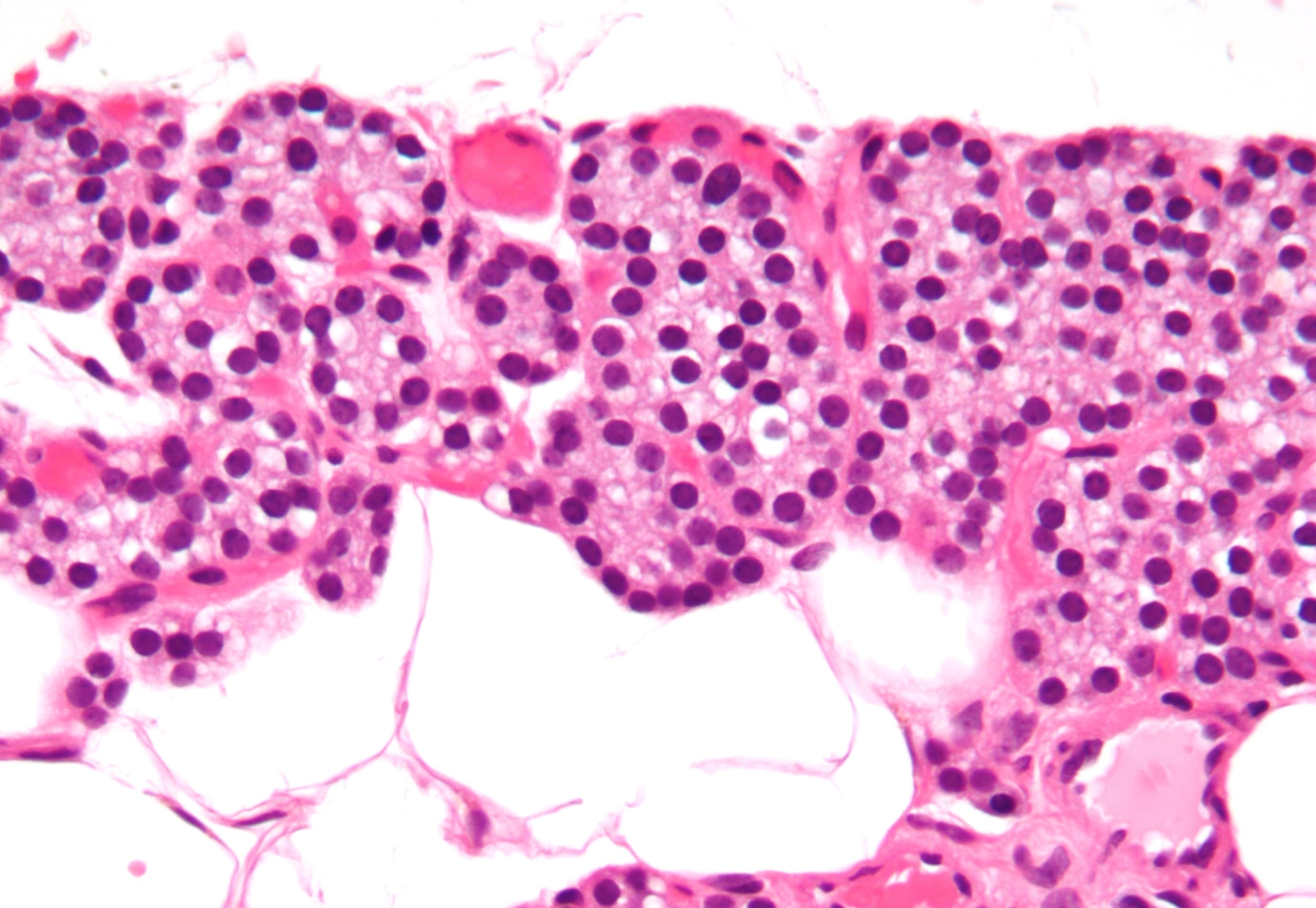
Oxyphil cells, also known as Hurthle cells, are a fascinating component of the human body that often goes unnoticed. These unique cells can be found primarily in the thyroid gland, but can also be found in other organs such as the parathyroid glands and salivary glands. Oxyphil cells stand out from other cells due to their distinct characteristics and functions. They have a larger size than typical thyroid cells and contain an abundance of mitochondria, giving them a granular appearance. Additionally, they play a crucial role in various physiological processes, such as hormone production and regulating the body’s metabolism. In this article, we will delve into 13 extraordinary facts about oxyphil cells, shedding light on their significance and shedding light on their significance within the intricate workings of the human body.
Key Takeaways:
- Oxyphil cells, also known as oncocytes, are mysterious cells with a pinkish appearance and unknown functions. They could hold the key to understanding aging, thyroid disorders, and even potential new treatments.
- These extraordinary cells are found in various organs like the parathyroid glands, thyroid gland, and kidneys. Their unique metabolic features and enigmatic nature make them a promising area of research for uncovering new insights into human health.
The Origin of Oxyphil Cells
Oxyphil cells, also known as oncocytes, are a unique type of cell that can be found in various organs throughout the body, including the parathyroid glands, salivary glands, thyroid gland, and kidneys. They were first discovered by Friedrich Gustav Jacob Henle, a German pathologist, in the mid-19th century.
Mysterious Appearance
Oxyphil cells have a distinctive appearance under a microscope. They are larger than normal cells and have densely packed, granular cytoplasm with high eosinophilia, which gives them a pinkish or red color when stained for examination.
Unusual Cellular Functions
One fascinating fact about oxyphil cells is that their exact function is still not fully understood. While they are believed to play a role in the regulation of calcium and phosphate levels in the body, their precise function and significance remain a subject of ongoing research.
Variations in Oxyphilia
Interestingly, the intensity of oxyphilia can vary among individuals. Some people may have a higher amount of oxyphil cells in certain organs, while others may have fewer or none at all. This variation is still not well understood and requires further investigation.
Presence in Parathyroid Glands
Oxyphil cells are predominantly found in the parathyroid glands, which are small endocrine glands located near the thyroid gland. These cells are responsible for producing and releasing parathyroid hormone (PTH), which plays a crucial role in regulating calcium levels in the body.
Association with Thyroid Disorders
Oxyphil cells can also be present in the thyroid gland, particularly in cases of certain thyroid disorders, such as Hashimoto’s thyroiditis. Their presence in these conditions is still not fully understood, and further research is needed to determine their role in thyroid function and pathology.
Potential Diagnostic Significance
The presence of oxyphil cells in certain pathological conditions, such as oncocytic tumors, can have diagnostic significance. Their identification and detailed examination under a microscope can aid in the accurate diagnosis and classification of these tumors.
Intriguing Metabolic Features
Studies have shown that oxyphil cells have unique metabolic features, including altered mitochondrial activity and increased production of reactive oxygen species (ROS). These metabolic characteristics make them an interesting subject of study for researchers exploring cellular metabolism and its implications in various diseases.
Potential Role in Aging
Some research suggests that oxyphil cells may have a role in the aging process. As we age, the number of oxyphil cells in certain organs, such as the parathyroid glands, tends to increase. The exact relationship between oxyphil cells and aging, however, is still not clearly understood.
Link to Renal Disorders
Oxyphil cells are also present in the kidneys, particularly in the collecting ducts. Their presence in renal lesions, such as oncocytomas, can provide valuable information for the diagnosis and treatment of these disorders.
Mysterious Origins of the Name
The term “oxyphil” is derived from the Greek words “oxys” meaning sharp or acidic and “philia” meaning attraction or liking. The exact reason behind this name choice is uncertain and adds to the intrigue surrounding these fascinating cells.
Potential Therapeutic Applications
Research into oxyphil cells is ongoing, and scientists are exploring potential therapeutic applications. Understanding their function and behavior could open doors to new treatments for conditions related to calcium regulation, thyroid disorders, and even aging-related diseases.
A Promising Area of Research
Oxyphil cells continue to capture the attention of researchers and medical professionals worldwide. Their unique characteristics and enigmatic nature make them a promising area of study with the potential to uncover new insights into cellular biology and human health.
Conclusion
In conclusion, oxyphil cells are a fascinating component of the human anatomy. Despite their relative rarity compared to other cell types, they play a significant role in various organs and systems. Oxyphil cells are primarily found in the thyroid gland, parathyroid gland, and the adrenal cortex. Their unique characteristics, including large size and abundant mitochondria, make them distinct from other cell types.These extraordinary cells are involved in the production and secretion of different hormones, such as calcitonin, parathyroid hormone, and adrenaline. They also contribute to the regulation of calcium and phosphorus levels in the body, as well as the body’s response to stress.Research on oxyphil cells is ongoing, and scientists continue to uncover new information about their functions and significance in the body. Understanding the intricacies of these cells can lead to advancements in medical treatments and therapies in the future.
FAQs
1. Where are oxyphil cells located?
Oxyphil cells are mainly found in the thyroid gland, parathyroid gland, and the adrenal cortex.
2. What distinguishes oxyphil cells from other cell types?
Oxyphil cells are characterized by their large size and abundant mitochondria compared to other cell types.
3. What hormones do oxyphil cells produce?
Oxyphil cells are involved in the production and secretion of hormones such as calcitonin, parathyroid hormone, and adrenaline.
4. What role do oxyphil cells play in the body?
Oxyphil cells contribute to the regulation of calcium and phosphorus levels, as well as the body’s response to stress.
5. How are oxyphil cells being studied?
Scientists are conducting ongoing research to better understand the functions and significance of oxyphil cells in the body.
Oxyphil cells, with their unique characteristics and functions, play a crucial role in parathyroid glands and beyond. Unraveling the mysteries of parathyroid hormone PTH can shed light on how these cells contribute to overall health. Endocrinology fun facts will captivate enthusiasts, revealing the intricate workings of the endocrine system. Moreover, mind-blowing facts about thyroid gland unveil its profound impact on metabolism and well-being. Delving deeper into these topics promises to engage readers and expand their understanding of the human body's complex mechanisms.
Was this page helpful?
Our commitment to delivering trustworthy and engaging content is at the heart of what we do. Each fact on our site is contributed by real users like you, bringing a wealth of diverse insights and information. To ensure the highest standards of accuracy and reliability, our dedicated editors meticulously review each submission. This process guarantees that the facts we share are not only fascinating but also credible. Trust in our commitment to quality and authenticity as you explore and learn with us.


